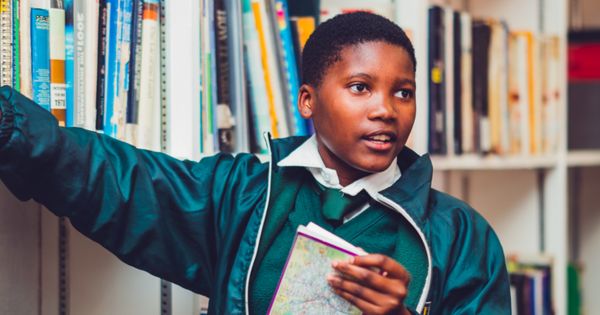There is not a specific time frame that says your child is ready for potty training. It is important to remember not to put your child under any pressure. Every child is different and will reach a specific development milestone when they are ready to do so.
All that we can do as parents is to be supportive and to help them along the way when they need us to be there for them. When it comes to potty training, some children might be ready at 18 months where others will only start at two years of age or even older. Kids typically start the potty-training process between ages 18 and 30 months. You can try different approaches and when you see there is no interest or co-operation from your child, then the time is not right. The worst thing that you can do is to get frustrated and start implementing discipline. Punishing a child for small accidents can have a negative impact on toilet training and will do more damage than good.
***Disclosure -The links in this post may contain affiliate links and I may receive a small commission if you make a purchase after clicking on a link.***

Important tips to remember for toilet training preparation:
- Most parents will realize very soon that privacy in the bathroom is a thing of the past once you have children. Encourage them by letting them watch you when you’re on the toilet and interact with them. By acting natural you’re letting them know that going to the toilet is no big deal and is the natural progression from being a baby to growing into a toddler. “Big kids “start using the toilet.
- Start talking about the potty before he/she is ready to train. Let them get accustomed to the idea of using a potty.
- Make sure you have the right tools to assist them with this next big step in their lives. Here are a few handy products to consider:
- Potty training toilet seats.
- Easy-peesy urinals for boys.
- Lightbowl toilet light (for going to the loo during night time)
- Portable training pot
- Potty (the good old fashioned one’s that we grew up with). It is important for a child to be able to slightly lean forward with both feet on the ground when sitting on the potty, especially when they are doing a number two. Many toddlers are afraid of falling into a toilet. This anxiety can impede their progress when potty training. A potty chair is also a great choice for toilet training.
- Multi-functional potty (with music etc.)
- A step stool
- Buy nappy pants that can easily be pulled up or down, instead of using regular nappies to assist you with the process.
- Toddlers are known to be difficult at times and they certainly don’t like change. As with everything else, introducing your child to potty training might have a negative or positive reaction. Try to get them excited and engaged.
- Be patient. Think of yourself as their coach or teacher. Motivate them instead of discouraging them. If your first few attempts are not desirable, try a different approach and see what works for you and your child.
- Boys generally take longer to potty train as opposed to girls because they are a lot more active and will be less likely to stop and use the potty.
Signs of readiness
It all depends on your child, where he/she is at psychologically, emotionally and physically. It can be tricky to know when the ideal time is, especially if you are potty training a special needs child.
But there are a few signs to be on the lookout for:
- Your child can pull their pants up and down without any help.
- Their nappies are dryer for longer periods of time. (This means t hat their bowel and bladder control is improving)
- Your child says poo or wee when you’re changing his/her nappy and understanding what they are.
- Showing signs of recognising the urge to go, for instance facial expressions, making noises or holding onto themselves.
- The child understands the meaning of wet or dry.
- Your child can sit on a potty or toilet and is able to walk.
- Your child can follow simple instructions and understands what you’re saying to them.
Tips to consider when potty training:
- Make sure you have a well-established routine. Avoid potty training during stressful times or when there are big changes happening i.e. moving to a new house, just started at a new school or there’s a new baby on the way. They might be less receptive to changes or feel too overwhelmed to attempt a new challenge.
- Make sure your kid has transitioned from the cot to a toddler bed. When you’re potty training, ideally you want your child to be able to have access to the toilet. If you feel that your child is not yet ready for a big-kid-bed, there is no harm in keeping a nappy on during the night at first until he/she (or you) are ready.
- Don’t show disappointment. Children want to make their parents happy and they flourish when they’ve accomplished something new and they’ve gained your praise.
- Don’t compare your children. Just because your first child potty trained within a short period of time, doesn’t mean this will be the case with your second or third child. Every child is different and just like other milestones, they will reach that milestone when they are ready.
- If your child has mastered potty training during the day, it will not guarantee success during the night or during naps. Some kids will manage to stay dry while they’re asleep from the beginning, but many others will take years before they reach the stage where wearing training pants is a thing of the past. Remember, bed wetting at night is normal and will eventually resolve by itself.
- If you are concerned at any stage, consult your doctor and check if you have any reason for concern.
Conclusion:
When you have a child that you’re considering starting potty training, make sure that they are ready to begin the process. Look for signs in their behaviour that will give you clues. Be patient and encouraging and make sure you have the right tools or equipment to assist them with this new milestone.
 Kaboutjie SA Mommy Blogs by Lynne Huysamen
Kaboutjie SA Mommy Blogs by Lynne Huysamen






Take your child every one hour toilet be patient don’t go back to nappies once you training if if going out it confess the child
Patience ,accidents will happen . New behavior takes time to adapt.praise when they are successful.
Does age play a big role? My daughter is almost 2 and like the article says sometimes it is hard. My mom tells me to wait until she is 2 when I feel she is ready because she says when she wants help. Do I only use underwear during the day or do I use nappies only at night and won’t that confuse her?
Kamo I started off with potty training during the day first and using underwear during the day. Then once they had pretty much mastered day time toilet use I moved onto nighttime potty training. I didn’t find my kids confused at all. When you start is really up to you but I would really take advantage now that it is summer since there will be a lot more washing and messes plus since it is warm you can let her run around without any pants or underwear outside then there is no washing and no dirty floors! Summer is the best for potty training 🙂
Need to take a few notes out of this book as we started potty training and in ended up in a total sh*t show and then we never did it again so maybe the approach was wrong or he wasn’t ready hopefully some of these will help the process
Well honestly potty training can be a nightmare! My daughter was quite easy, she was keen to learn and get started… but my son was not interested for a long time and we had to get him potty trained for moving out of the baby class at preschool into the next class. They have to move to the next class by 3 and they have to be potty trained to move classes so the pressure was on!
i have follwed all these tips and im currently potty training my kid
Again, another very helpfull article. We’ve busy with my grandson’s potty training and your article is so informative. 👌 Thank you.
Great tips thank you it took us a little longer to get the whole potty training under hand but we have made it now we just need to do night time potty training
It took awhile to find what worked best for him and now we are happy to say we use the toilet during the day.